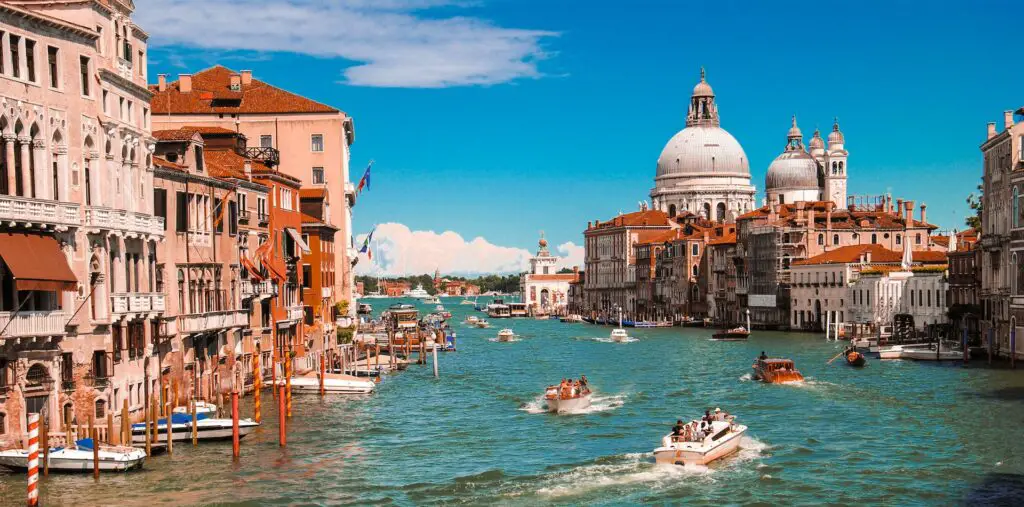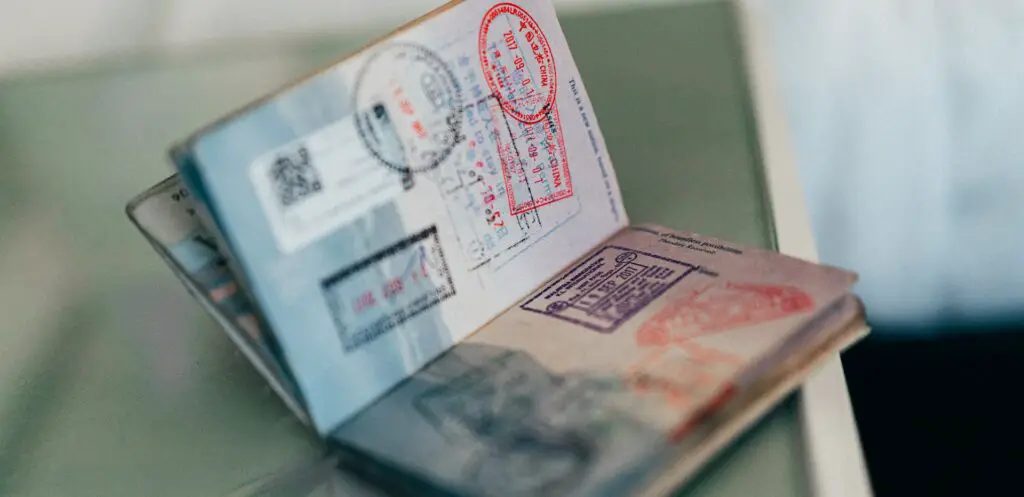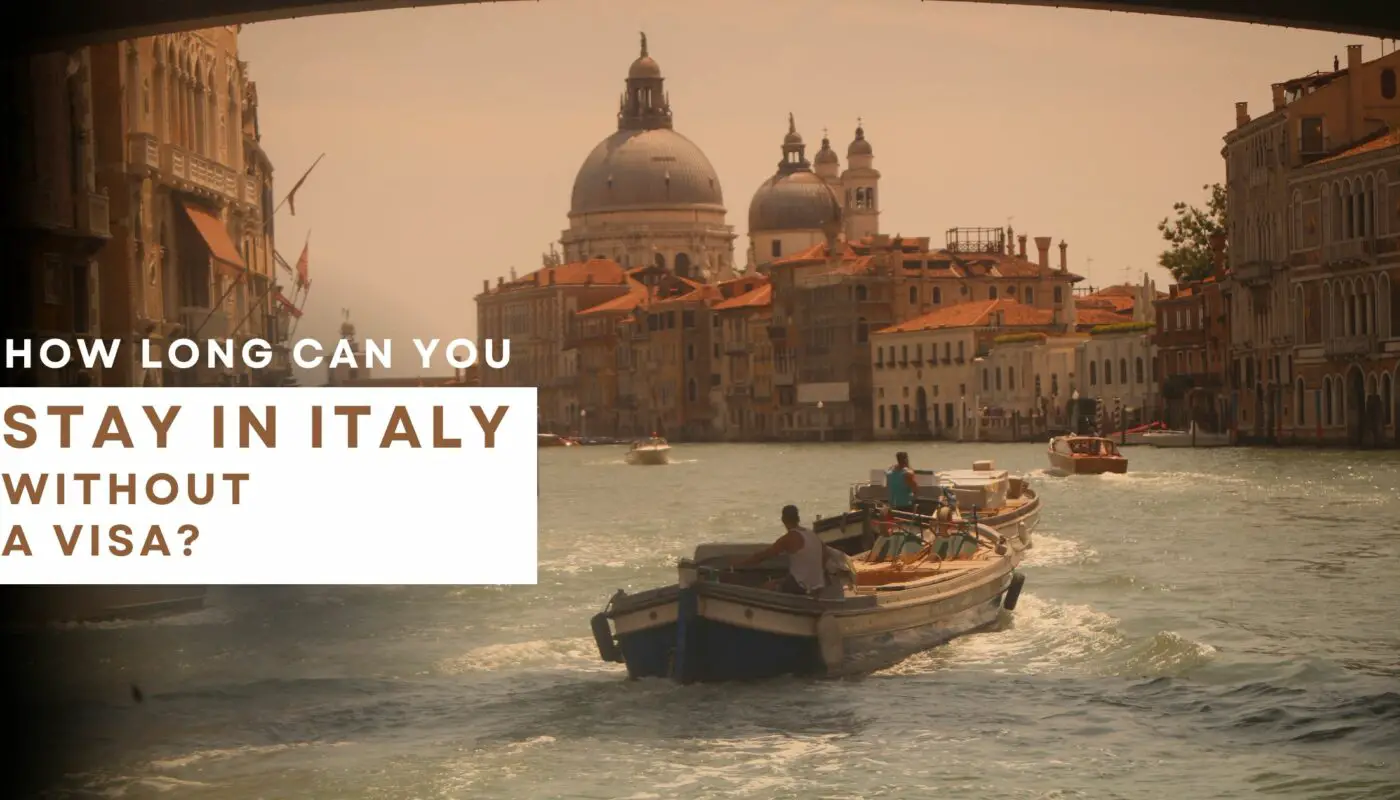If you are planning to visit Italy within the next few months, you must be looking for some pressure release in the beautiful city. However, how long can you stay in Italy without a visa?
We will provide you with all the relevant information on this topic in this article so that you are fully prepared for your upcoming travel to Italy.
Let’s get started!
How Long Can Tourists Stay In Italy Without A Visa?

If you want to just roam around Italy as a tourist from the U.S., you can stay in Italy for 90 days without a visa. There is no need for you to obtain a visa if you just want to explore Italy as a tourist within a period of 90 days.
Citizens from the United States do not need to apply for a short-term visa or Schengen visa while traveling to Italy.
They can simply show their identification proof and enjoy Italy without going through the process of obtaining a visa first.
Very few countries among the non-EU countries in the world enjoy this facility.
So, if your next family or friend trip is to Italy, you don’t have to worry about getting a visa for up to 90 days of your stay here.
However, you need to declare your presence in Italy with the local authorities if you wish to stay in the nation for more than a period of 90 days.
How Long Can You Stay In Italy Without A Visa For Business Purposes?
If you want to visit Italy for business purposes, you are not required to obtain a visa for a period of 90 days. You can just enter Italy with your passport or another accepted ID proof like a tourist. However, this stay should not exceed 90 days.
What Are The Rules Of Your Stay In Italy?
Although you can travel to Italy and stay there for 90 days without a visa, the most important rule to follow is to carry your passport with you which should be valid for at least 3 months from the date of your planned return to the US.
Your visit is limited to a maximum of 90 days in six months or 180 days.
This means that you can either visit Italy and stay there for 90 consecutive days or you can plan multiple visits to the country for a total of 90 days in a 180-day period without a visa.
You must be particular about your stay. As in, it must not exceed 90 days in a 180-day period or you might have to face legal repercussions.
People often get confused about the 90/180 rule. The rule is quite simple.
The 180-day rule is for a rolling period. You need to count backward the last 180 days when you wish to enter Italy. If your 90-day limit is already exceeded in this period, you cannot stay in Italy anymore.
If you want to stay in Italy for more than 90 days, you must apply for a long-stay visa in the country.
What Happens If You Overstay In Italy Without A Visa?
If you have miscounted the number of days and crossed the 90 days without obtaining a long-stay visa, you might face the following consequences.
- Overstaying may result in you getting arrested
- You have to pay a hefty fine to the authorities
- You might get deported to your country.
You need to note the days you are in the country without a visa. The law is very strict regarding this matter.
It does not matter whether you stay in Italy unintentionally or make a genuine mistake. You have to face the consequences of this mistake. In some cases, you are asked to leave the country within a specified period.
People are arrested or deported rarely, only if they are involved in illegal activities.
What Is A Long-Stay Visa?

Also known as a National Visa or D-Visa, Long-Stay Visa is required when you want to stay in the country for more than 90 days. You can obtain a long-stay visa from the Italian Consulate in the jurisdiction of your residence in the US. This process might take 2-4 weeks.
You might also have to appear for a face-to-face interview at the Consulate in the US.
It is important to get a long-stay visa as you cannot apply for a residence permit in Italy with a short-stay visa, i.e., the Schengen visa.
There are different types of long-stay visas that you can apply for. But, you need to identify your purpose first. The different types of Italian long-stay visas include:
- The Italy Study Visa – Students above the age of 18 who have secured admission to an Italian educational institute can apply for this visa after giving proof of all the documents.
- The Italy Work Visa – If you have secured a job in Italy, you can get a work visa to engage in salaried work. If your job position is not confirmed, you cannot get this visa.
- The Italy Self-Employed Visa – It is for entrepreneurs who want to open a business in the country.
- The Italy Family Visa – Any foreign national who wants to join a family member who already possesses Italian citizenship or a permanent residence permit can get this visa.
- The Italy Working Holiday Visa – This visa is available to individuals between the age of 18-30 from foreign countries that are part of a working holiday program with Italy.
Your purpose of traveling to Italy will determine your application for a long-stay visa. You can apply for a residency permit in the country if you are staying for more than 90 days.
How Can You Apply For An Italy Long-Stay Visa?
Every country that has an Italian Consulate can allow its citizens to apply for a long-stay visa in the country. This location is in charge of handling and processing visa applications. The first and the most common one is an Italian Embassy or Consulate.
Here are two other places you can apply for an Italy Long-Stay Visa:
- A visa application center has the power to issue this visa. Italy outsources visa applications to TLS International, COX and Kings, and so on.
- If there is no Italian representation in your country, you can look for representation from another Schengen country Italy has outsourced visa applications.
Once you determine where you have to submit your visa application, you need to do the following things:
- Book an appointment with the respective visa application center.
- Visit the website of the respective location and download the Italian long-stay visa application form.
- Keep all your documents handy that you might need to support your application form.
- Fill in all your details and complete the application form.
- You can pay your visa processing fees online or on the day of your appointment. It depends on the center’s requirements. This fee is non-refundable even if you don’t get a visa.
- Be present at the location on the day of your appointment with all the documents and the visa application form in person.
The processing time differs from center to center. This is why you must keep at least 45 days in your hand to get visa approval so that you can travel hassle-free.
What Are The Requirements That You Need To Fulfill For An Italy Long-Stay Visa?
Italy has some basic visa requirements where you need to have your documents like a visa application form, valid passport, health insurance, fully paid visa fees, and other relevant documents to obtain a long-stay visa. Visit the official website of Italian Representation in your country to know more.
These documents also depend on the purpose of your travel and the type of long-stay visa you are aiming for.
But, every country requires a set of standard documents that include the following:
- A complete long-stay visa application form, duly dated and signed.
- Two passport pictures
- A valid passport with at least two blank pages for the visa stamp. Your passport must be issued in the past 10 years and be valid for three months from the date of your return from Italy.
- Health insurance to cover any possible medical emergencies.
- Fully paid visa fees.
- Other documents pertaining to your purpose of travel. If you are going for a study visa, you must have your admission documents ready with you.
Once your entry is approved in the country, you will receive a stamp on your passport with the date announcing your arrival in Italy.
Do You Have To Get A Travel Health Insurance While Traveling To Italy?
US citizens are not required to apply for travel health insurance if they are traveling visa-free. If you are in Italy for a period of 90 days, you don’t have to necessarily obtain health insurance. However, many experts recommend you get health insurance if you are traveling to Italy.
This health insurance will cover any unforeseen medical emergencies that might occur throughout your trip.
Can A US Citizen Be Rejected from Entering Italy Visa-Free?
A US citizen can be rejected from entering Italy if something is wrong with their passport or they have some issues with the bookings. Your entry to the country depends on the sole discretion of Italy’s authorities. The Italian border guards have the final say in the matter.
It is up to their discretion whether a traveler should be permitted to enter or not.
If for some reason, you are rejected from entering Italy, you have to go back to the United States and make an application for a Schengen visa at your nearest embassy.
You can book an appointment with the Embassy or Consulate and get your visa approved.
What Is The Schengen Zone?
It signifies a zone in Europe where 27 countries have done away with their internal borders to allow unrestricted movement of citizens. If you are a part of any of these 27 countries, you don’t need a special visa to travel across borders.
The Schengen Zone covers most European countries except Ireland and the UK. It has helped ease movement in the European nations which has resulted in an increase in tourism and business activities.
Do People Residing In The Schengen Area Need A Visa To Visit Italy?

There is no need for people living in the Schengen zone to obtain a visa to enter Italy. Since Italy is a part of the Schengen zone, citizens living in the 27 European nations do not need any form of visa to enter the country.
People can cross the internal borders of all the state members freely and they are not subjected to any border checks.
All the countries, part of the Schengen zone have the same shared standards for traveling across the external borders of the member countries.
All state members enjoy the same short-stay visa conditions which help them to travel to other nations.
You have to get your passport stamped on your arrival, though. It is essential to get this stamp on arrival as without it you might be subjected to legal proceedings.
Which EU Countries Can You Visit Without A Visa?
The Schengen zone signifies a group of 27 European countries that have dissolved their internal borders for the free movement of people. This zone covers most EU countries, including Austria, Croatia, France, Germany, Italy, Iceland, Malta, Ireland, Spain, Norway, Netherlands, etc.
Let us look at the following table to learn more:
| Austria | Yes |
| Croatia | Yes |
| France | Yes |
| Germany | Yes |
| Italy | Yes |
| Iceland | Yes |
| Malta | Yes |
| Ireland | No |
| Spain | Yes |
| Norway | Yes |
| Netherlands | Yes |
| Switzerland | Yes |
| Romania | No |
| Slovakia | Yes |
| Bulgaria | No |
| Cyprus | No |
| Hungary | Yes |
| Greece | Yes |
| Lichtenstein | Yes |
| Denmark | Yes |
| Belgium | Yes |
Among these countries, there are also some countries that are not part of the EU but are a part of the Schengen Zone.
How To Get A Schengen Visa?
Figure out which visa you need and then fill out the application form. Once you submit your application, book an appointment and keep your documents ready for D-day. If you want to obtain a Schengen visa to travel to Italy, you must meet certain requirements.
You must have the following documents with you while applying for a Schengen visa:
- A valid passport – You need to make sure that your passport was issued in the last 10 years and is valid for up to at least 3 months from the date of your return from Italy. It must also have two blank pages to get the visa stamp from the Italian authorities.
- U.S. Permanent Residency Card – Also referred to as the Green Card, make sure that it is valid.
- Visa application form – It must be filled with all your details and duly signed by the applicant.
- Two passport-size photographs – One photograph must be glued on the application form. If it is stapled, your application might be rejected.
- Financial information – Keep your bank and credit card statements of the past three months with you. You also need proof of sufficient financial funds that will cover your stay in Italy. You can produce your pay slips, proof of employment, and other relevant documents.
- Hotel reservations – This will prove that you have made arrangements to stay in the country lawfully.
- Travel insurance – It is needed to ensure that you will be able to cover your medical charges if any emergency comes up.
- Proof of travel arrangements – You must give your round trip flight information, intended mode of transportation, and complete itinerary.
The Italian Embassy or Consulate might ask you for additional documents. You can contact them and find out beforehand to be better prepared for any situation.
Final Word On Visa Requirements In Italy
If you are from the USA, you don’t need to obtain a visa to travel to Italy for a period of 90 days. If you wish to stay in the country for more than 90 days, you can apply for a long-stay visa and extend your stay.
That’s all! We hope this post helped you gain helpful insights into visa requirements in Italy.
Drop your comments about the post below!


![Is Priceline Legit The Real Truth About Priceline [EXPOSED]!](https://traveloons.com/wp-content/uploads/2023/03/Is-Priceline-Legit-The-Real-Truth-About-Priceline-EXPOSED-445x265.jpg)


![Priceline Pricebreaker Review - Priceline Pricebreaker Exposed! [Scam ALERT]](https://traveloons.com/wp-content/uploads/2023/03/Priceline-Pricebreaker-Review-Priceline-Pricebreaker-Exposed-Scam-ALERT-445x265.jpg)


